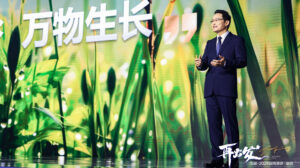A budget for hope in Malaysia?

The government has outlined its plans to collect and spend money next year. Equally important are institutional reforms and stakeholder engagement.
IN evaluating how other people are going to spend your money on your behalf, there are inevitably a number of different perspectives you can take.
The contents of a national budget can have a huge impact on your life, whether you are a student or a retiree, an employer or an employee, and regardless of your cultural background, age, and current level of income, assets and spending.
But despite the approval or disapproval citizens may have about certain proposals in a national budget that affect them personally, I believe the majority of Malaysians want all their compatriots to live free of poverty and hardship, and ultimately to thrive in a land of bountiful opportunity.
Naturally, the immediate reactions to the first Pakatan Harapan budget pertained to those with a personal impact. Colleagues and friends celebrated or decried the departure levy, fuel subsidies and soda tax.
In terms of the impact on society as a whole, my colleagues at the Institute for Democracy and Economic Affairs (Ideas) have said this: “[The budget] promises transparency and better value for taxpayers’ money, provides adequate non-tax measures to fill revenue shortfalls, and proposes a range of measures for economic growth focusing on SMEs and boosting trade, agricultural and industrial activities.
“The budget represents a delivery of many manifesto promises, with some creative compromises such as on tolls and PTPTN. This … makes the budget good news for average households and businesses alike.
“This has not come cheaply however – operational spending has gone up by over 10%. This year, the government is being helped by a RM30bil special dividend from Petronas but that cannot be counted on every year, so there will need to be further reductions in spending in the near future.”
We welcome the support for SMEs, which we have always believed should be the main driver of the economy, and it’s good that social enterprises are getting due recognition through income tax deductions for contributions to them.
Similarly we look forward to the conclusions of the task force to review GLCs under Ministry of Finance Inc to ensure they do not compete with the private sector. However, bodies under other ministries should be reviewed too, and it is important to define “strategic” sectors clearly.
Support for the B40 (the bottom 40% of the population with the lowest household incomes) is also notable with targeted payments and subsidies to help smoothen consumption levels.
In terms of affordable housing, the exemption of stamp duty for first-time home buyers together with low-interest financing for low-cost housing purchases will hopefully go some way to opening up home-owning opportunities.
Still, while addressing cost of living was one of the main thrusts of the manifesto, it is hoped that the government’s objectives on promoting renewables and developing the energy market are not derailed by fuel subsidies.
For me, one highlight was the commitments to institutional reforms. Although governments all over the world have to embed some populism and compromise in a national budget, such spending can at least be optimised by ensuring cleaner and leaner institutions that encourage competition and transparency where possible.
That is why we applaud the utilisation of more open tenders instead of direct negotiations, and of course we hope the government succeeds in recovering some of the losses through revenue leakages such as through illicit trade – in addition, of course, to claiming back debts that should never have been issued in the first place.
In the longer term, the manifesto promised to further engage stakeholders in the policymaking process by drafting Green Papers to promote discussion, and White Papers before Acts of Parliament are introduced. Such a process would particularly benefit budget-related legislation.
However, while I was happy that the Malay term used was the Sanskrit-derived belanjawan rather than bajet, I was disappointed that the Finance Minister continued the practice of carrying the document in a leather briefcase – albeit a different brand from the one the previous finance minister used.
I have nothing against these brands, but I thought that the minister could have located Tun Tan Siew Sin’s original budget box and used that instead.
Symbolically, it might have echoed the early optimism of a new country, compared to perpetuating an affinity for foreign luxury bags.
But if you’re going to use a new bag, then why not choose one of the many artisanal options crafted by local communities spurred by social entrepreneurs? That would have been a better symbol of bountiful opportunity being carried by Malaysians, for Malaysians.
Tunku Zain Al-‘Abidin is founding president of Ideas. The views expressed here are entirely the writer’s own.






